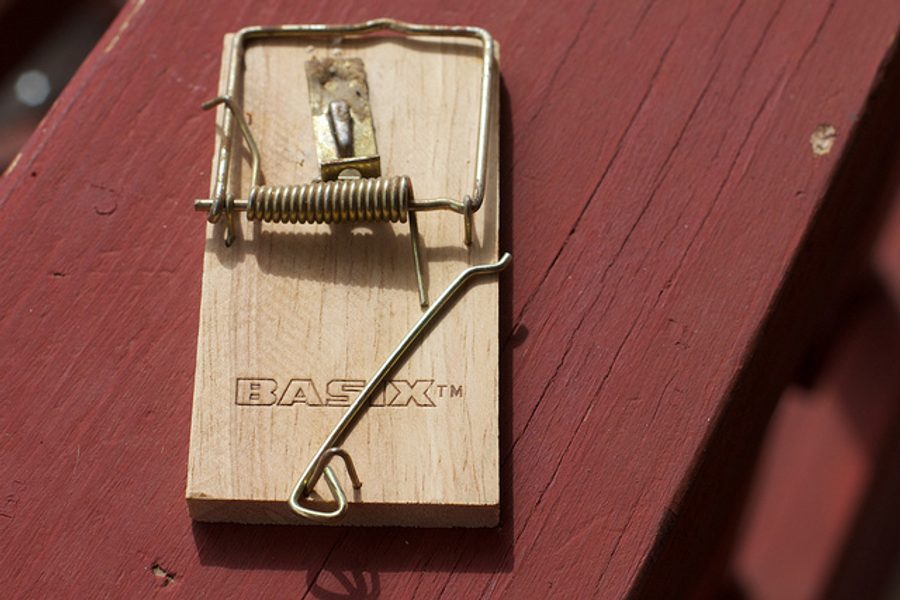A Better Media Mousetrap
Can NewsCred save the dying print industry? Probably not, but it does offer a glimmer of hope
Kenneth Rapoza

Here’s one for sour pants, jaded print reporters like me. A young guy walks into a bar and says he has the tools to save newspapers and magazines. Silence. And the reporters bust a gut laughing, doubled over in pain, spilling their Old No. 7 on the rocks all over the bar counter.
More than 1,100 journalists have been laid off since January. In mid-July, the Fort-Worth Star-Telegram fired 12 newsroom staffers including the managing editor. Sports Illustrated is laying off. The local Leader Call, a 100-year-old daily in Laurel, Miss., ceased publication in March.
Around 200 newspapers have folded since 2008, according to the newspaper death watchers at Paper Cuts.com.
It’s not that people don’t read. They just don’t read print. The proliferation of online news and general content has been a ticking time bomb for news rooms nationwide ever since Matt Drudge quietly launched the Drudge Report in the late 1990s and the dot-com bubble burst to add insult to injury.
Just when media executives think they have the answer, the digital world comes along and changes the question.
Shafqat Islam is changing the question. And he has the answer to this: Can a 31-year-old news junkie from Bangladesh save American news rooms? Cynical journalists stop laughing and read on.
Islam is the CEO of NewsCred, a four-year-old start up based in Manhattan with backing from venture capitalists. What does NewsCred do? It licenses and curates full text articles, photos and video from sources like The Economist, The Guardian, Reuters and The Financial Times, helping publishers and brands create customized content experiences to drive traffic and build new revenue streams.
“Say your particular site, whether it’s a newspaper or Pepsi, just happens to want news about the financial industry from Japan. You subscribe to that one of our newsfeeds and we bundle the content for you and you put it on your website. It’s business to business,” Islam says. “It’s not a Google Alert where you’re getting a thousand articles on a subject. We are more specific and only pulling from a few places. We are not an aggregator. We license the articles. We are paying for it. So it is better for journalism.”
The New York Daily News wanted to launch a new section for the Southeast Asian community, but found it was too costly to cover, edit and build a news page around that content. So instead, they went to NewsCred, which got them licensed content from major media outlets. Now, Daily News readers from Southeast Asia can read cricket scores and the latest political follies in New Delhi from The Hindustan Times, for example. NewsCred pays Hindustan Times from the revenue it gets from the articles that the Daily News pays to put on their website. (The Daily News was not available to comment for this story.)
“We let them experiment with the lower costs,” Islam says. “Then if it takes off, and you get the readership you’re hoping for, you can hire editors and more journalists to do the local stories for that community if you want to build around that.” NewsCred also designs and hosts the site.
Something is working at NewsCred. They’re actually hiring editors, and require all of them to have journalism backgrounds.
“A lot of people think I’m crazy for building a company in the news business. But I’m a news junkie. I want to keep journalism alive,” Islam says. “Sure the media can go out and syndicate content one by one with different publishers. But our role is to do it for them. We’re the curators. We put it together.”
Amish Jani of First Mark Capital in New York is one of the investors in NewsCred. They’re also backers of Pinterest, one of the new darlings of content sharing websites.
“My first question was, how do you build the business from an ad-based model to a pay-and-subscriber-based model, and I loved their position around premium content and good journalism,” Jani says. “I liked their technology. It gives the publisher an idea where their traffic is coming from in real-time.”
Premium content. Good journalism. Wow. Well, Shafqat Islam’s heart is in the right place. The cynic in me doesn’t think it will be enough to make a dent in the dying print industry, but for the sake of the business, at least he’s trying.
This reporting is supported by The Media Consortium.







